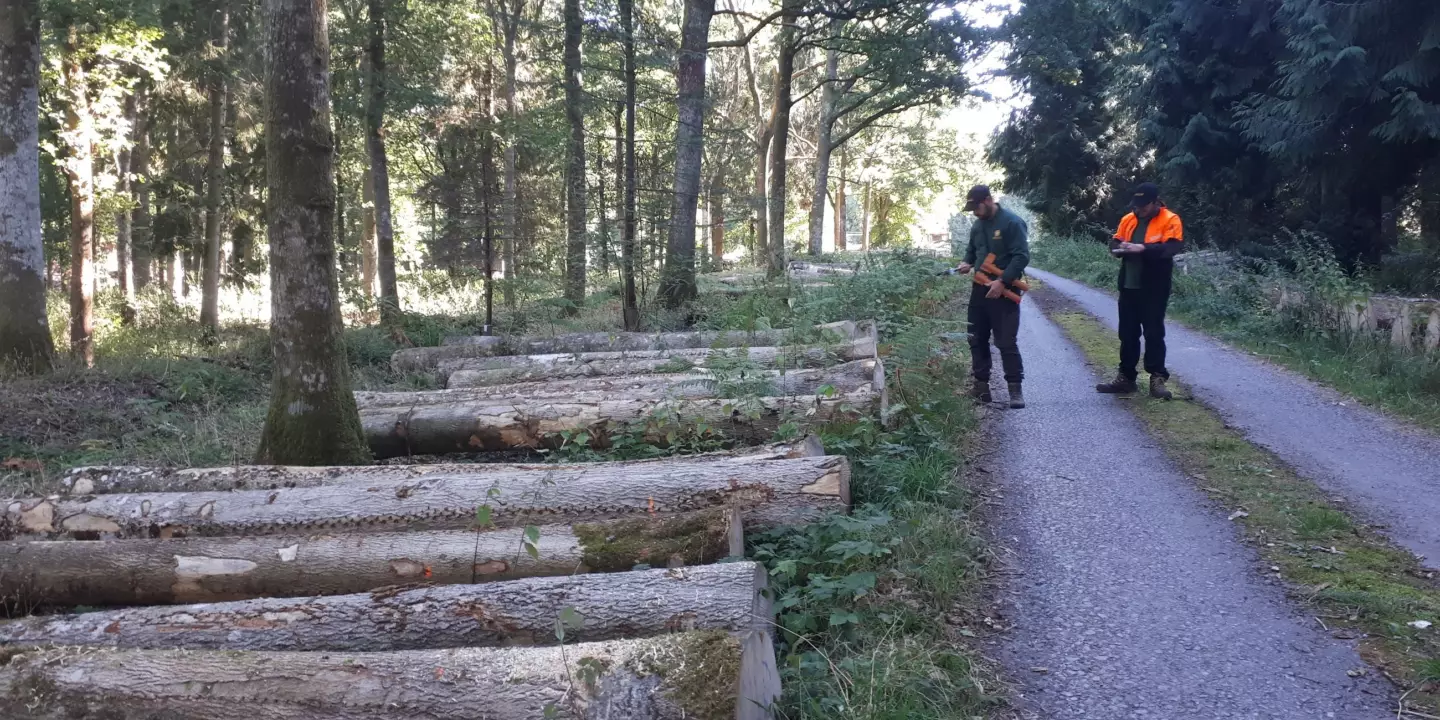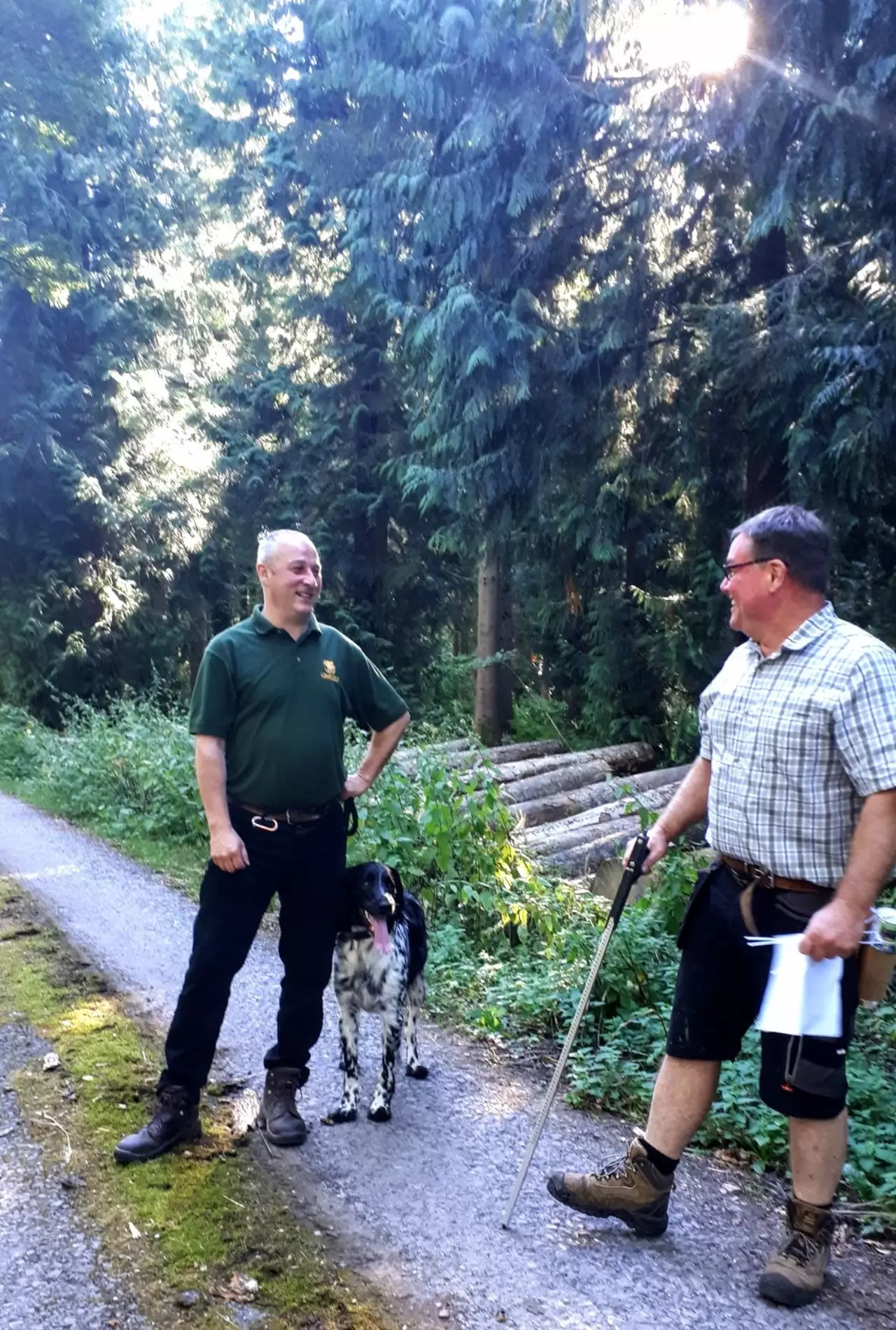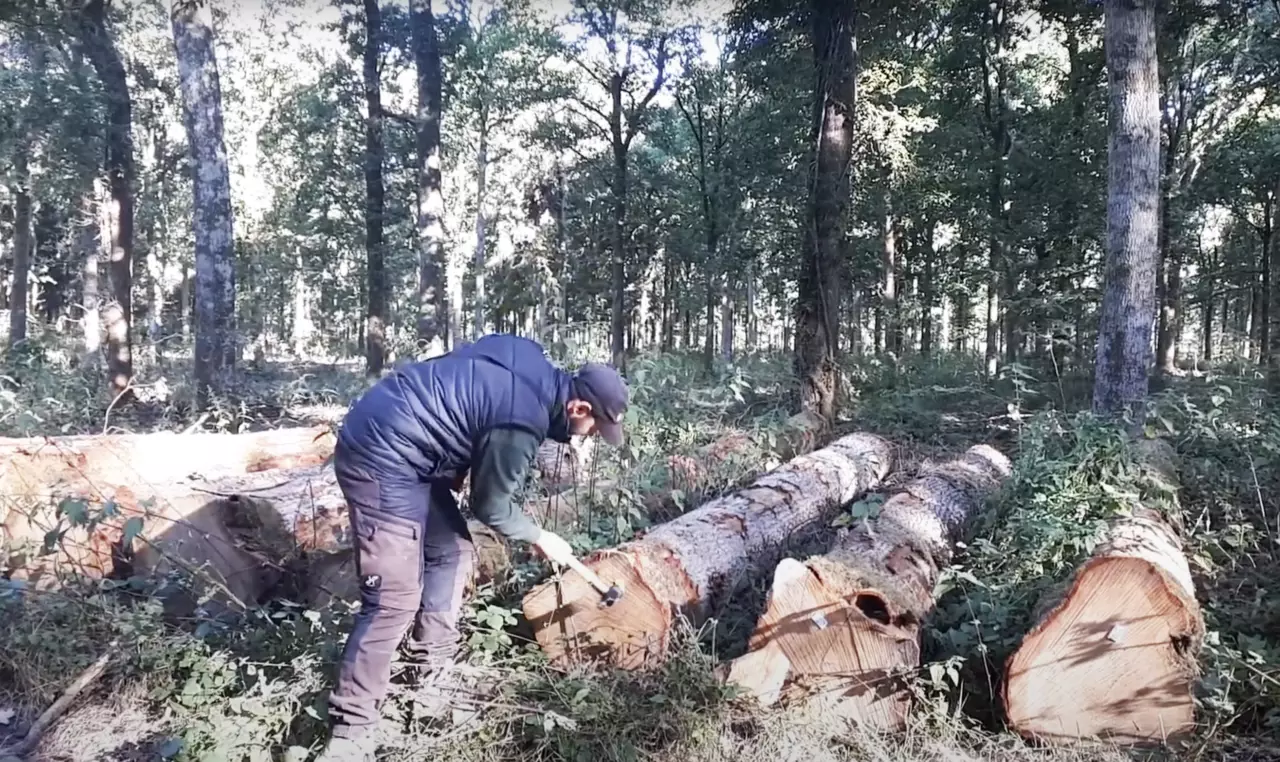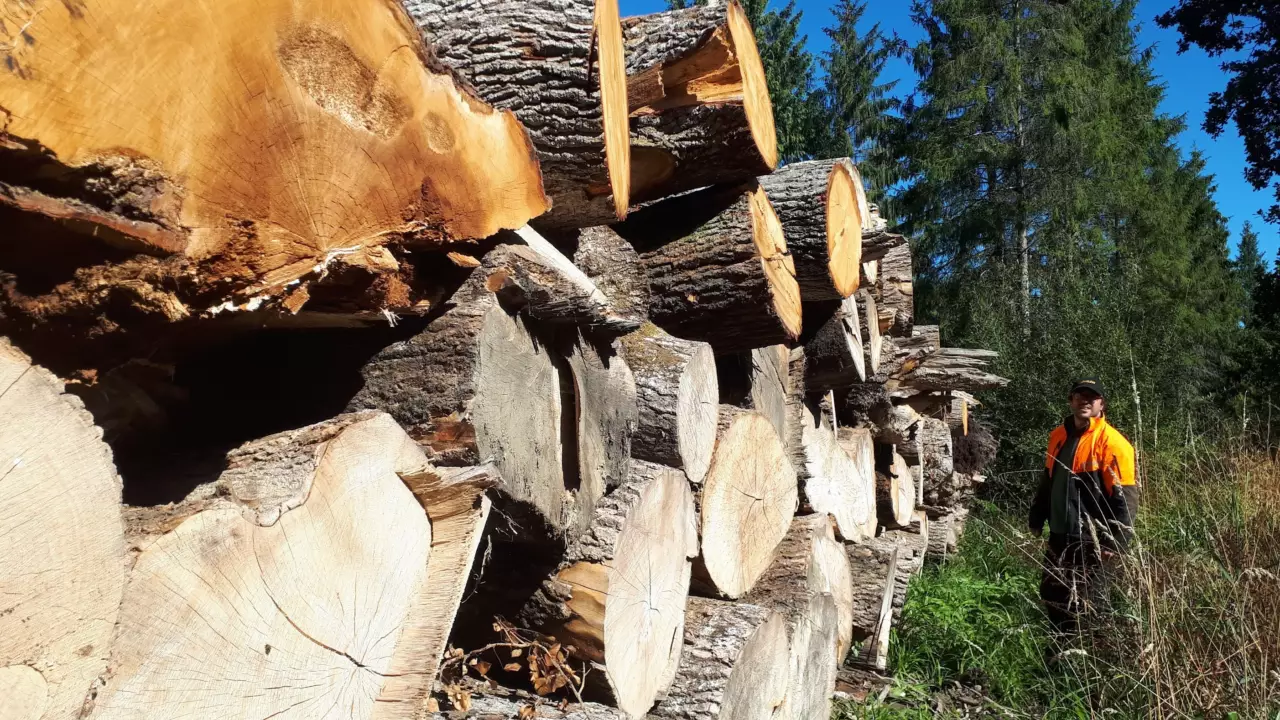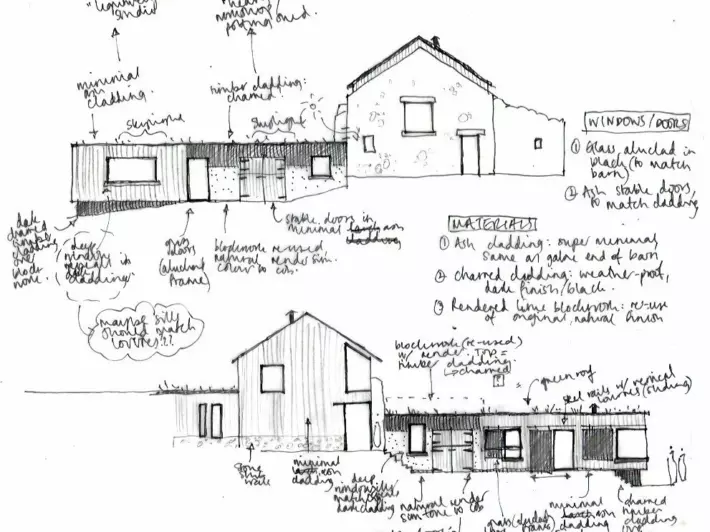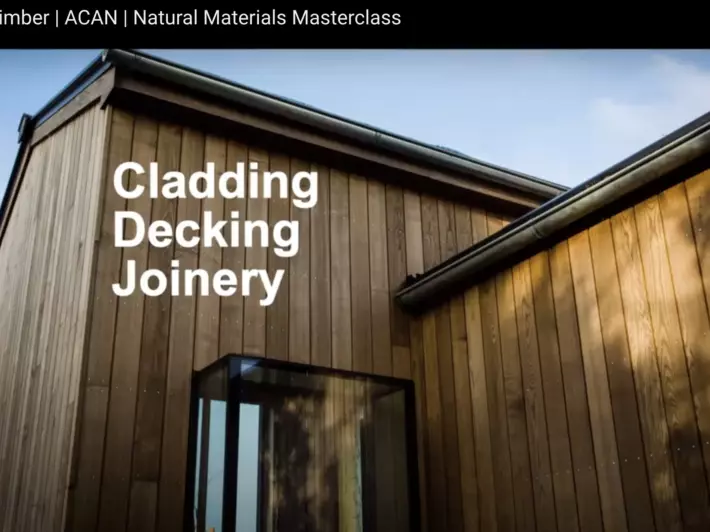To find out more about this special place we joined our log buyer, Rupert, on a recent visit.
Here we met head forester, Jim McConkie, at an area known as Norwich wood, a planted ancient woodland by Cley Hill in Wiltshire.
We asked Jim a few questions about the woodland.
What kind of trees and wildlife can you find at Longleat forest?
Jim: It is a diverse woodland here, with plenty of wildlife. In fact, we recorded over 100 moths in our recent moth survey.
In terms of trees, we have ash growing amongst the oak, although unfortunately we have ash dieback disease. We’ve been removing affected trees to combat this. Hence why Vastern Timber is here to take this ash to the sawmill.
There’s probably about 5% natural resilience to dieback here. We have a few ‘green’ ash and we’re very happy we have them. We’ve given our details to the Future Trees Trust to assess these trees as part of the Living Ash project
Does most of your timber go to sawmills?
Jim: Longleat forest is about 4000 acres. The annual growth rate is about 20,000 cubic metres of wood, and we harvest up to about 10,000 cubic metres.
Some goes to our firewood business and ‘lower markets’ like biomass and chip, but most of it goes to sawmills. We’ve got great form to our trees as they’ve been nurtured well.
